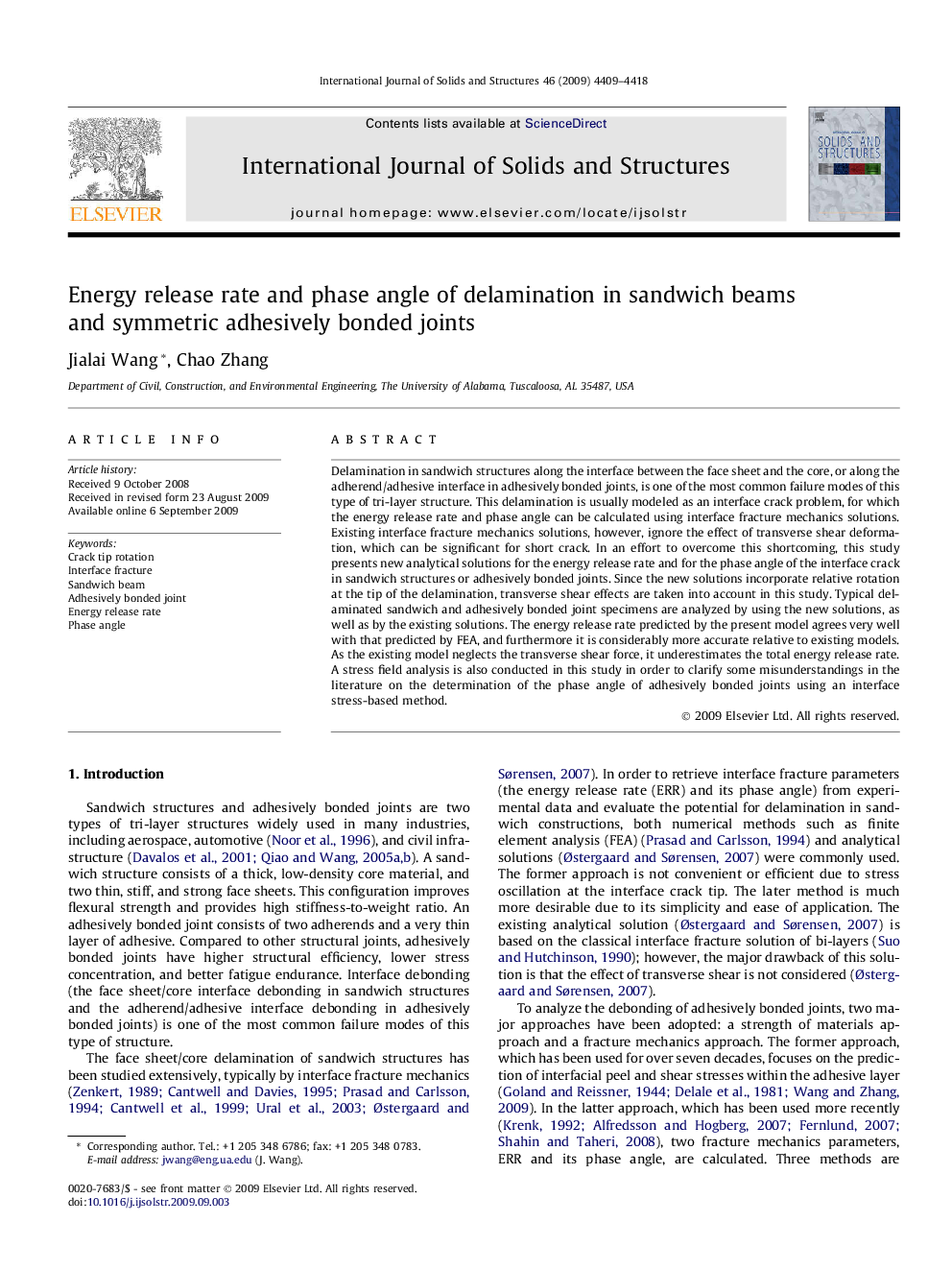| Article ID | Journal | Published Year | Pages | File Type |
|---|---|---|---|---|
| 279433 | International Journal of Solids and Structures | 2009 | 10 Pages |
Delamination in sandwich structures along the interface between the face sheet and the core, or along the adherend/adhesive interface in adhesively bonded joints, is one of the most common failure modes of this type of tri-layer structure. This delamination is usually modeled as an interface crack problem, for which the energy release rate and phase angle can be calculated using interface fracture mechanics solutions. Existing interface fracture mechanics solutions, however, ignore the effect of transverse shear deformation, which can be significant for short crack. In an effort to overcome this shortcoming, this study presents new analytical solutions for the energy release rate and for the phase angle of the interface crack in sandwich structures or adhesively bonded joints. Since the new solutions incorporate relative rotation at the tip of the delamination, transverse shear effects are taken into account in this study. Typical delaminated sandwich and adhesively bonded joint specimens are analyzed by using the new solutions, as well as by the existing solutions. The energy release rate predicted by the present model agrees very well with that predicted by FEA, and furthermore it is considerably more accurate relative to existing models. As the existing model neglects the transverse shear force, it underestimates the total energy release rate. A stress field analysis is also conducted in this study in order to clarify some misunderstandings in the literature on the determination of the phase angle of adhesively bonded joints using an interface stress-based method.
